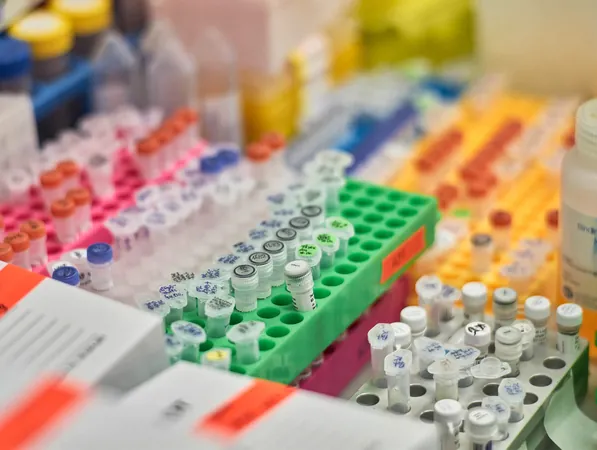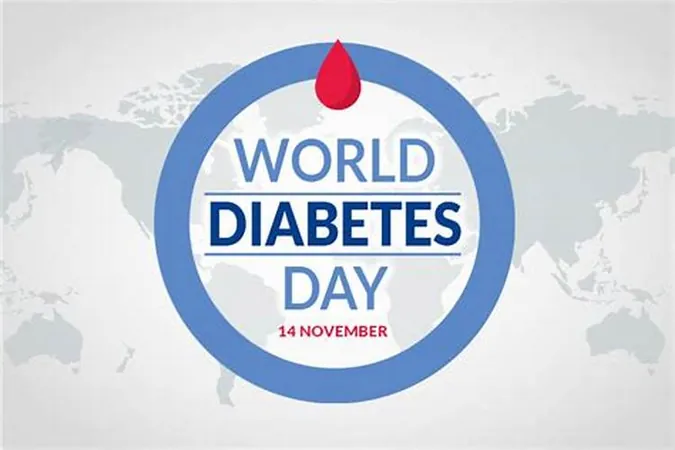
New Mini ‘Gene Scissors’ Could Revolutionize Treatment for High Cholesterol
2024-09-23
Author: John Tan
New Mini ‘Gene Scissors’ Could Revolutionize Treatment for High Cholesterol
Researchers at the University of Zurich have made a groundbreaking discovery that could transform the landscape of genetic medicine. By enhancing a compact protein known as TnpB, they have created a powerful gene editing tool that may soon offer new hope for individuals suffering from familial hypercholesterolemia, a genetic condition that causes dangerously high cholesterol levels.
For years, CRISPR-Cas has dominated the field of gene editing, allowing scientists to slice and dice DNA with precision. However, this well-known technique comes with limitations, particularly due to the sizable nature of the Cas proteins, which complicates their delivery into human cells. Enter TnpB, a smaller and more transportable "gene scissors" contemporary.
In a study published in Nature Methods, the researchers utilized advanced protein engineering and artificial intelligence (AI) to enhance the efficacy of TnpB, achieving a remarkable 4.4-fold increase in its DNA-modifying capability. “We are excited about the potential of TnpB, which can effectively edit DNA with unprecedented efficiency," says Gerald Schwank, a key investigator in this study.
Unpacking the Scientific Breakthrough
The TnpB protein originates from the notoriously resilient bacterium Deinococcus radiodurans, known for its resistance to extreme conditions, including radiation. Initially, TnpB’s application in human cells was limited due to inefficiency in targeting DNA. However, the team’s innovative improvements have enhanced its ability to navigate the nucleus—where DNA lives—and effectively recognize a broader range of target sequences.
To gauge just how effective their revamped TnpB tool is, the researchers tested it on more than 10,000 unique target DNA sequences. This extensive testing was complemented by a new AI model that predicts TnpB's efficiency on various target sites. “Our model streamlines the experimental design process, allowing us to achieve impressive editing efficiencies of up to 75.3% in mouse livers and 65.9% in brains,” explains Kim Marquart, a doctoral student involved in the research.
A Game Changer for High Cholesterol Treatment
Familial hypercholesterolemia is a genetic disorder affecting approximately 31 million people worldwide, significantly increasing their risk for heart disease. Traditional treatments often fall short, leaving many patients requiring lifelong medical management. The researchers from Zurich demonstrated that their optimized TnpB could edit a crucial gene involved in cholesterol regulation, resulting in a dramatic 80% cholesterol reduction in treated mice.
In comparison to CRISPR-Cas9, which requires multiple viral particles for delivery due to its larger size, TnpB can be packaged into a single virus particle for more efficient transport. This feature positions TnpB as a formidable candidate for future gene therapies.
Looking Ahead: A Future Without High Cholesterol?
As the research progresses, the aim is not just to advance laboratory findings but to translate these innovations into viable treatments for humans suffering from familial hypercholesterolemia and potentially other genetic disorders. If these promising results can be successfully replicated in clinical trials, TnpB could pave the way for a new era of gene editing therapies that offer life-changing hope to millions.
Stay tuned as we continue to follow these remarkable advancements in genetic science that could redefine treatment options for high cholesterol and beyond!




 Brasil (PT)
Brasil (PT)
 Canada (EN)
Canada (EN)
 Chile (ES)
Chile (ES)
 España (ES)
España (ES)
 France (FR)
France (FR)
 Hong Kong (EN)
Hong Kong (EN)
 Italia (IT)
Italia (IT)
 日本 (JA)
日本 (JA)
 Magyarország (HU)
Magyarország (HU)
 Norge (NO)
Norge (NO)
 Polska (PL)
Polska (PL)
 Schweiz (DE)
Schweiz (DE)
 Singapore (EN)
Singapore (EN)
 Sverige (SV)
Sverige (SV)
 Suomi (FI)
Suomi (FI)
 Türkiye (TR)
Türkiye (TR)